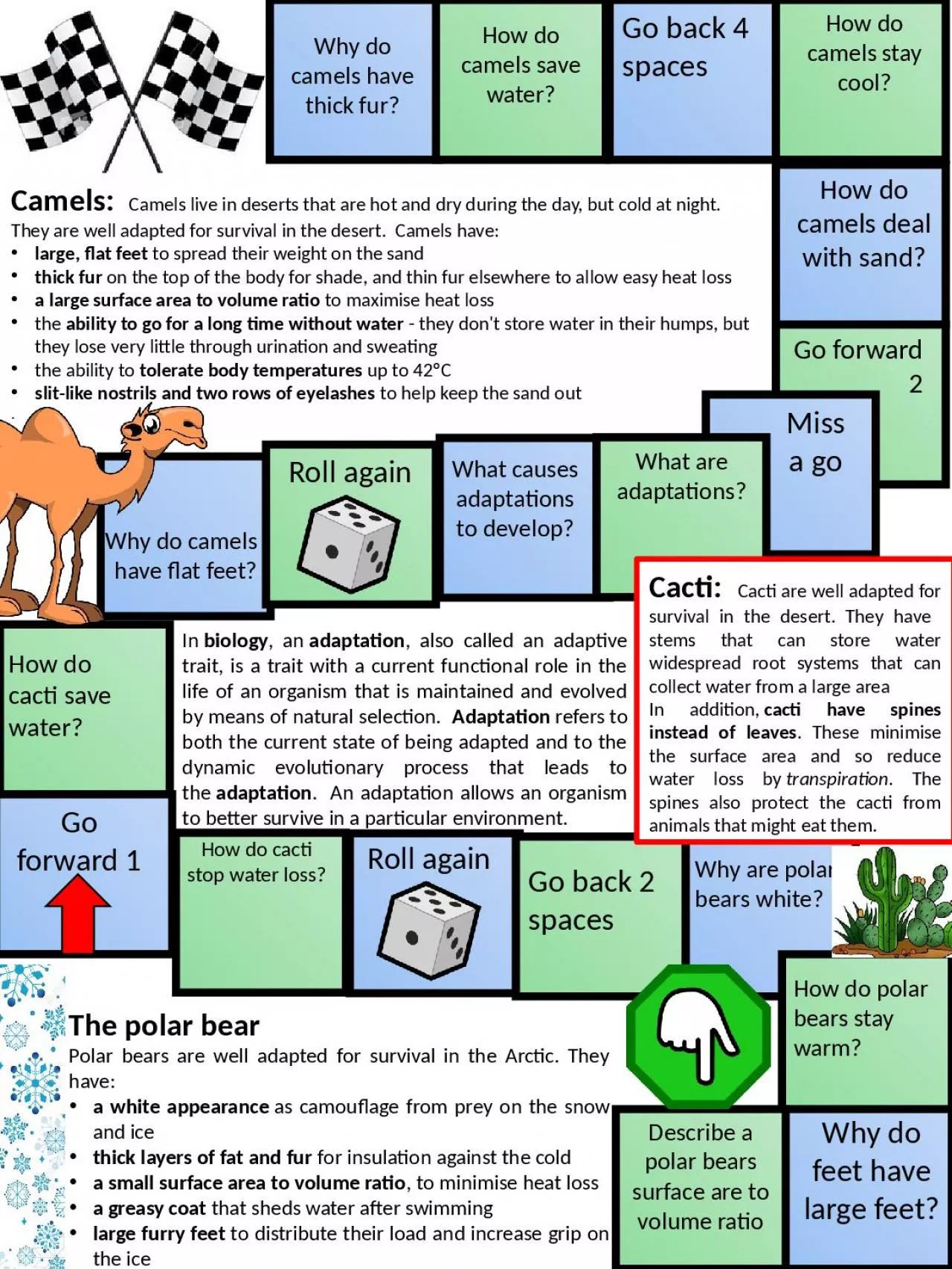

large flat feet to spread their weight on the sand thick fur on the top of the body for shade and thin fur elsewhere to allow easy heat loss a large surface area to volume ratio to maximise heat loss ID: 1047944
Download Presentation The PPT/PDF document "Camels: Camels live in deserts that ar..." is the property of its rightful owner. Permission is granted to download and print the materials on this web site for personal, non-commercial use only, and to display it on your personal computer provided you do not modify the materials and that you retain all copyright notices contained in the materials. By downloading content from our website, you accept the terms of this agreement.
1. Camels: Camels live in deserts that are hot and dry during the day, but cold at night. They are well adapted for survival in the desert. Camels have:large, flat feet to spread their weight on the sandthick fur on the top of the body for shade, and thin fur elsewhere to allow easy heat lossa large surface area to volume ratio to maximise heat lossthe ability to go for a long time without water - they don't store water in their humps, but they lose very little through urination and sweatingthe ability to tolerate body temperatures up to 42ºCslit-like nostrils and two rows of eyelashes to help keep the sand out.Why do camels have thick fur?How do camels save water?Go back 4 spacesHow do camels stay cool?How do camels deal with sand?Go forward 2Miss a goWhat causes adaptations to develop?What are adaptations?Why do camels have flat feet?Roll againHow do cacti save water?Go forward 1How do cacti stop water loss?Roll againGo back 2 spacesWhy are polar bears white?How do polar bears stay warm?Why do feet have large feet? Describe a polar bears surface are to volume ratioThe polar bearPolar bears are well adapted for survival in the Arctic. They have:a white appearance as camouflage from prey on the snow and icethick layers of fat and fur for insulation against the colda small surface area to volume ratio, to minimise heat lossa greasy coat that sheds water after swimminglarge furry feet to distribute their load and increase grip on the iceIn biology, an adaptation, also called an adaptive trait, is a trait with a current functional role in the life of an organism that is maintained and evolved by means of natural selection. Adaptation refers to both the current state of being adapted and to the dynamic evolutionary process that leads to the adaptation. An adaptation allows an organism to better survive in a particular environment. Cacti: Cacti are well adapted for survival in the desert. They have stems that can store water widespread root systems that can collect water from a large areaIn addition, cacti have spines instead of leaves. These minimise the surface area and so reduce water loss by transpiration. The spines also protect the cacti from animals that might eat them.